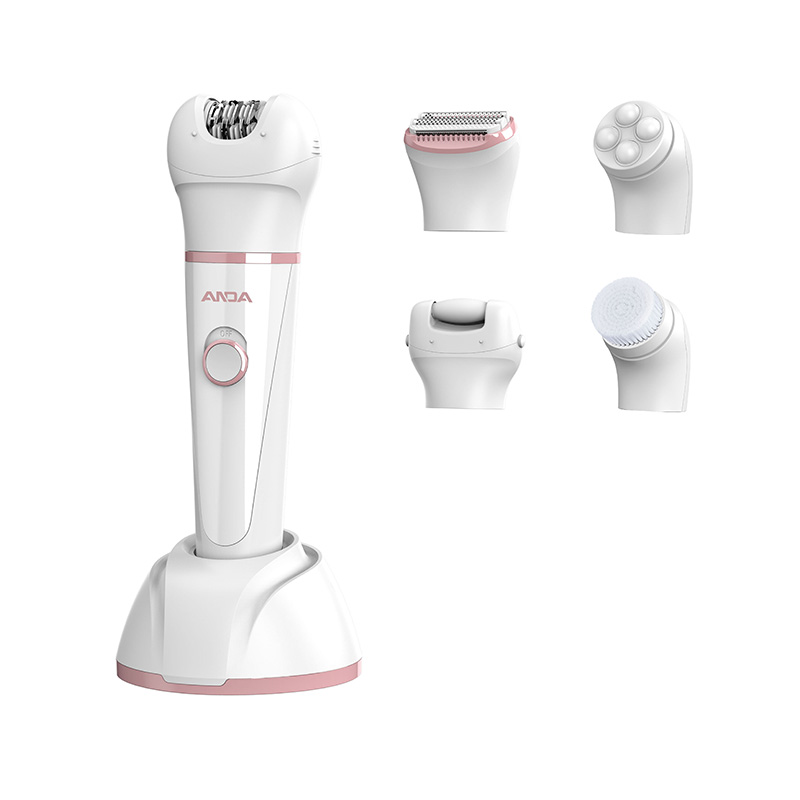 2025.07.11
2025.07.11
 Industry News
Industry News
Understanding Wet and Dry Epilation Capabilities
Many modern women’s electric epilators are designed with the versatility to be used in both wet and dry conditions, offering users the flexibility to choose the environment in which they feel comfortable. Wet use refers to the ability to operate the device in a shower or bath, typically on damp or soapy skin, while dry use involves using the epilator directly on clean, dry skin without water or additional products. The dual-use feature enhances convenience and caters to individual preferences and skin sensitivities, making it a popular consideration when selecting a hair removal device.

Advantages of Wet Use for Sensitive Skin
Using a women’s electric epilator in the shower or bath can significantly reduce discomfort, especially for individuals with sensitive skin. Warm water helps relax the skin and open pores, making it easier for the epilator to remove hair with less resistance. This can cause a gentler experience with reduced pain and a lower likelihood of skin irritation. Additionally, wet conditions allow users to pair epilation with soothing gels or foams, which act as lubricants and further minimize discomfort. This makes wet use particularly beneficial for beginners or those using the device on delicate areas like the underarms or bikini line.
Benefits of Dry Use for Quick and Convenient Hair Removal
Dry use of an electric epilator offers speed and simplicity, ideal for those who need quick touch-ups without the need to prepare a shower or bath. It allows for better visibility of the hair, enabling users to target specific areas more precisely. Dry skin also creates a firmer surface, which can help the device grip and remove shorter or finer hairs more effectively. Some users find that dry epilation delivers slightly longer-lasting results because the hair is pulled more completely when the skin is taut. For experienced users accustomed to the sensation, dry use can be both efficient and effective.
Considerations When Choosing Between Wet and Dry Models
Not all women’s electric epilators are built for dual usage. Devices specifically labeled as "wet and dry" are typically waterproof and have sealed bodies to ensure safety and durability during wet operation. These models often run on rechargeable batteries to eliminate the risk of electric shock and are designed to function without degradation when exposed to moisture. In contrast, models intended only for dry use are not water-resistant and must never be used in wet environments, as this poses serious safety hazards. It is important to consult the manufacturer’s specifications and safety instructions before using any epilator in the shower or bath.
Cleaning and Maintenance Benefits of Wet and Dry Designs
Wet and dry epilators usually offer easier cleaning options. After use, they can be rinsed under running water to remove hair and residue from the tweezers or discs, promoting hygiene and extending the device’s lifespan. Some come with detachable heads that can be cleaned or even soaked if necessary. This contrasts with dry-use-only models, which often require brush cleaning and careful handling to avoid water exposure. The ease of cleaning associated with wet-compatible models is a significant convenience factor, especially for users with frequent grooming routines.
Conclusion
Many women’s electric epilators are designed for both wet and dry use, providing flexibility, comfort, and practicality for various hair removal needs. Wet use is ideal for reducing discomfort and irritation, especially for sensitive skin, while dry use offers quick results and better precision. Choosing a model that supports both modes can enhance user experience, but it is essential to ensure the device is specifically rated for wet use before exposing it to moisture. With proper selection and care, dual-use epilators offer a reliable and adaptable solution for effective at-home hair removal.